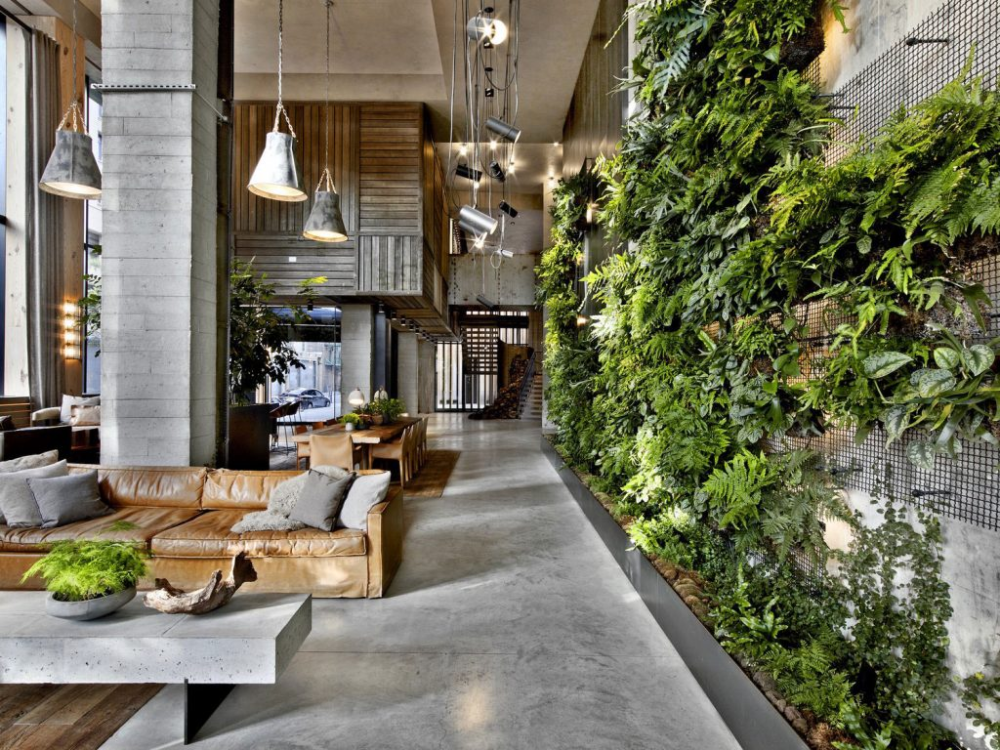It actually took me quite awhile to decide on a project aesthetic. From the outset, I had the idea to create a 3D topographic map or relief, but I struggled with how to actually incorporate a more clear aesthetic. I was initially drawn to minimalism because it seems fairly prevalent in the topographic reliefs I was able to find through research. While I think that they look appealing, I wanted to try to challenge myself to find, and use, a different aesthetic. I wanted to really be able to take ownership and have greater creative control over the project. Especially because much of the design for this project can be generated using widely available online tools.

Since the goal of this project is upcycling, I wanted to make sure that whatever aesthetic I choose focuses on the material to some extent. To this end, the industrial aesthetic, or industrial chic, seem to be a good fit at least in part. That is because industrial chic has a focus on the raw materials, especially metal and wood, that were prevalent in the design of early factories. I can accomplish this in a two-fold manner: I can find old materials that could have been used for construction and I can ensure that the original surface is preserved. Additionally, choices like stain or finish can make a large impact and help ensure that the finished piece would fit within the industrial aesthetic. In addition to this, I was really inspired by the biophilic design aesthetic, which is a bit more outside of my comfort zone. For this, I drew inspiration from pots for a variety of small plants.


The biophilic aesthetic could be added by creating a small area where an air-plant could be potted. Since the industrial aesthetic primarily focuses on the re-use of material, and the types of materials used, it can easily be used in tandem with the biophilic aesthetic. I chose these two aesthetics in combination because I think that they will be able to work well together, and they will allow me to express more creative control and freedom over this project than something like minimalism. The overall aesthetic of my project can be best visualized in the image below where the industrial chic interior of a hotel has added biophilic elements by adding a fern wall.

References:
Makendo, and Instructables. “Easy 3D Topographical Maps with Slicer.” Instructables, Instructables, 15 Sept. 2022, www.instructables.com/Easy-3D-Topographical-Maps/.
“Mountain Ceramic Air Plant Pot, Boho Henna Pinch Pot, Boho Decor, Mountain Decor.” Native, tk-nativetest.squarespace.com/imported-products/mountain-ceramic-air-plant-pot-boho-henna-pinch-pot-boho-decor-mountain-decor.
Pelosi, Pete. “Hotel Design Trends 2022.” Occa, 21 Dec. 2021, occa-design.com/blog/hotel-design-trends-2022/.
“Plant Fuji.” Japan Trend Shop, www.japantrendshop.com/plant-fuji-p-2296.html.


6 Comments. Leave new
This aesthetic is super fascinating to me as I am not very familiar with it. Do you think that choosing materials that contrast the natural elements in some way would be beneficial?
Hi Hunter! I do! I think that an important part aspect of really making my project “pop” will be choosing a base material that can contrast with a light green of plants that may be included. In addition, since I want to maintain an industrial chic aesthetic, it will be important to use materials that are reminiscent of early factory work. I would love to have the base be made of a carved 4×4 as they are often imperfect and could provide a great contrast with the plants. However, I have been having a problem finding areas where I could get the part made, so I may have to opt for cardboard, which I think would still match the industrial aesthetic albeit with a more modern touch.
Hey Palmer, having chosen a very similar aesthetic, I’m wondering if you plan on incorporating any metal or wood textures into your project.
Hi Derek, thank you for the comment! I am planning on incorporating wood into the project as the base. I realize that the industrial chic typically incorporates worn metal but I am unsure if I will be incorporating it into my project. Instead I am opting (if I can find a location to machine it) for old construction materials. If combined with a dark stain that can accentuate things like cuts or imperfections in the wood (even printed labels) it would match the industrial chic aesthetic of honoring materials and re-use of common industrial materials. I may incorporate a metal bast (using angle iron) if I have time. If you are struggling with incorporating the aesthetic that could be a good option.
Hi Palmer, I like your idea of trying to work on a biophilic design for your upcycle project. One thing that I thought of while reading your post is a terrarium, if you haven’t heard of them, I think they may be worth looking into and can become some pretty cool pieces to have around and require little maintenance.
Hi Ben, thank you! Your comment actually inspired me to look into some terrarium plants that could work well for my project. I think I will try to use dried moss, as live moss won’t be able to thrive without an enclosure. It would still provide the biophilic element that I am looking for, but it would also tie in more to the design than a more leafy plant because it can act almost as an “edge” for the defined topographic areas.